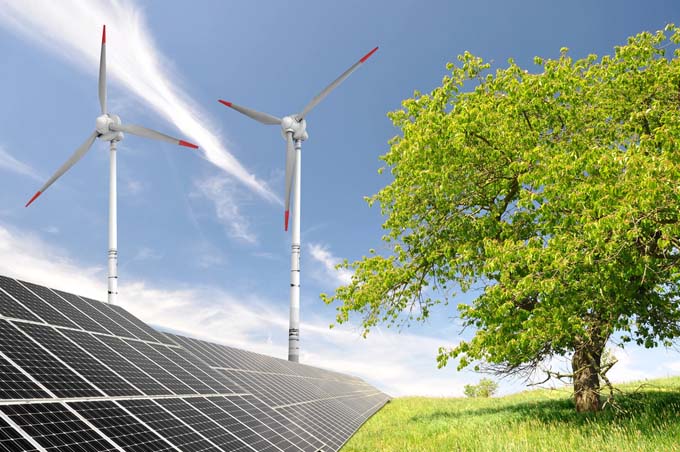How sustainable is Swiss agriculture?
A new Agroscope methodology will help farms assess their sustainability in the future.

In the future, farmers should be able to assess the sustainability of their farms using indicators. Agroscope presented new methodological developments in sustainability assessment for farms at the third Sustainability Conference. Several contributions on the topic of milk from Switzerland and Germany illustrated sustainability assessment using practical applications.
"Sustainable food production is based on a sound assessment of sustainability at the farm level," explained Paul Steffen, Head of the Agroscope Institute for Sustainability Sciences INH, at the third Agroscope Sustainability Conference at the Reckenholz site in Zurich. For several years, research institutes in Switzerland have been developing the scientific basis for sustainability assessment for farms. In the process, Agroscope is working with external experts to develop a set of quantitative impact indicators for the areas of environment, economy and society. Components such as resource efficiency, climate, nutrient management, ecotoxicity, biodiversity, soil quality, landscape, animal welfare, social and economic are taken into account. With the knowledge gained from the assessment, farmers can further develop their production in the direction of sustainability.
Cooperation between valley and mountain operations brings benefits
For the assessment of environmental impact, a proven set of tools is already available in the form of the methodology of life cycle assessments. Using the life cycle assessment method SALCA and an economic analysis, the recently completed EU project Cantogether took a close look at the cooperation between valley and mountain farms in rearing. "Contract rearing is a good example of how a production system that was originally based on economic considerations can also have ecological advantages," said Silvia Marton of the Agroscope Life Cycle Assessment Research Group on the ecological and economic success of the division of labor in dairy farming.
In contract rearing, valley farms usually sell their calves to mountain farms, which take over the rearing. After two years, the animals are bought back by the valley farm. This allows the valley farm to concentrate its resources on milk production; the grassland of the mountain farm provides optimal conditions for rearing. This cross-regional cooperation of mountain and valley farms showed a higher eco-efficiency, for example with regard to non-renewable energy resources and the consumption of potassium and phosphorus. While a higher income was achieved on the valley farm, the division of labor on the mountain farm led to lower inputs, but at the same time to a lower income. When deciding for or against contract farming, the social situation of the farm must therefore also be taken into account.
Workload - what is sustainable?
The social aspects of sustainability assessment were the subject of the contribution on workload on farms by Christina Umstätter of Agroscope's Labor, Construction and Systems Assessment Research Group. A good work-life balance has a positive effect on the mental and physical constitution of people, she explained. However, the psychological stress components tend to increase. As an indicator for the sustainability assessment of workload, Umstätter suggests the quotient of actually available workers and required people on the farm.
The contribution of a farm to a varied and beautiful landscape or an animal welfare index are also to be included as indicators in the sustainability assessment in the future. The economic sustainability of a farm is to be assessed on the basis of accounting data.
Indicators: Impact-oriented, measurable, practical
In order to enable the goal of a quantitative assessment of farms, indicators are generally required that are, among other things, impact-oriented, easily measurable and practical. When compiling a set of indicators for the evaluation of farms in Swiss agriculture, existing instruments provide a good basis.
RISE and SMART, two further sustainability assessment tools that are already being used in practice, were presented at the conference. RISE, or Response-Inducing Sustainability Evaluation, is a computer-based method developed at the HAFL University of Agricultural, Forest and Food Sciences to assess the sustainability of farms. It is based on ten indicators and takes into account ecological, economic and social aspects. The Research Institute of Organic Agriculture FiBL has also developed SMART, the Sustainability Monitoring and Assessment RouTine, a tool for assessing the sustainability of companies in the agricultural and food sector. This is based on the SAFA sustainability guidelines (Sustainability Assessment of Food and Agriculture Systems) of the Food and Agriculture Organization of the United Nations FAO and consists of a database with assessment methodology and a set of indicators.
Application for the analysis of operating strategies
The conference has shown that much has already been achieved on the way to sustainability assessment of farms. However, it also showed that conflicts of objectives often arise between the various dimensions of sustainability, which need to be addressed in an appropriate and solution-oriented manner. The conclusion of the conference: Sustainability assessments should be increasingly used in the analysis of farm strategies.
Method for sustainability assessment with SALCA
Agroscope is developing an assessment system for sustainability that is based on the life cycle approach and includes the three sustainability areas of environment, economy and social issues. For the environmental dimension, the life cycle assessment method SALCA (Swiss Agricultural Life Cycle Assessment) is used, which allows a comprehensive and flexible assessment of agricultural products, production systems and food. For this purpose, the SALCA method is being developed into a sustainability assessment tool. A complete revision of the informatics tools in the SALCAfuture project will create the basis for a rational and automated collection and processing of sustainability indicators.
(Agroscope)









